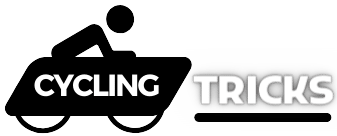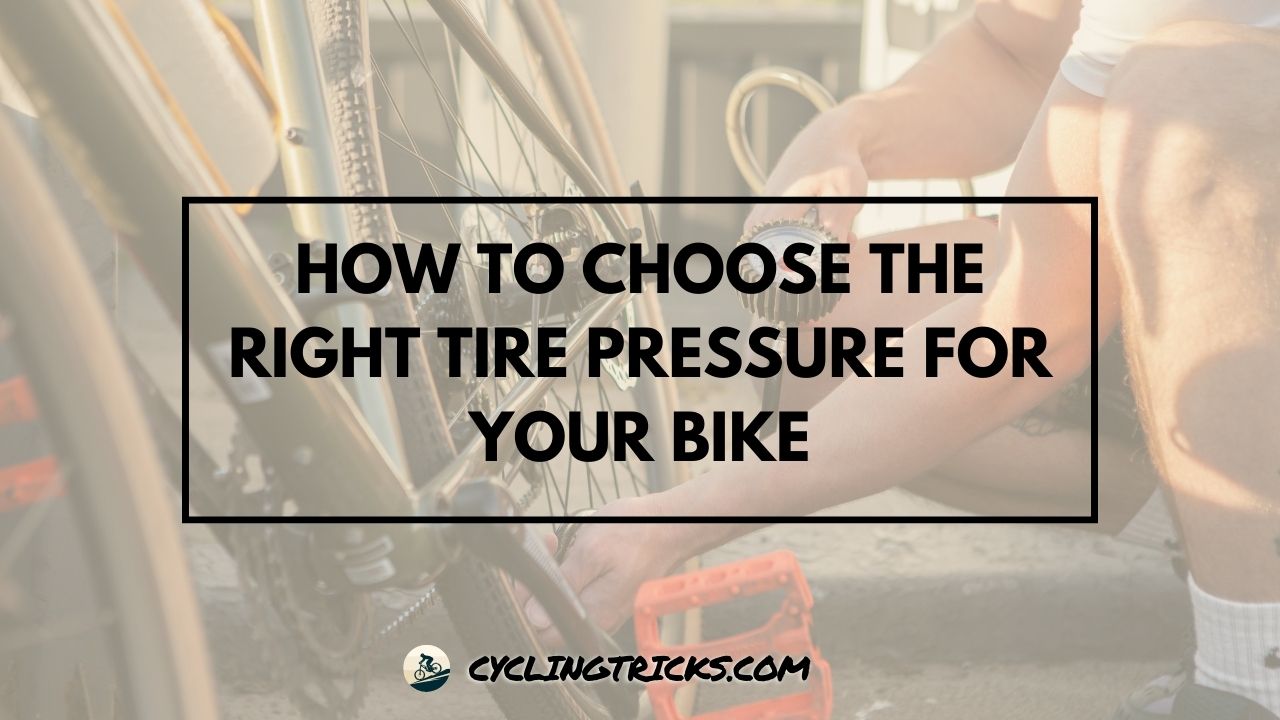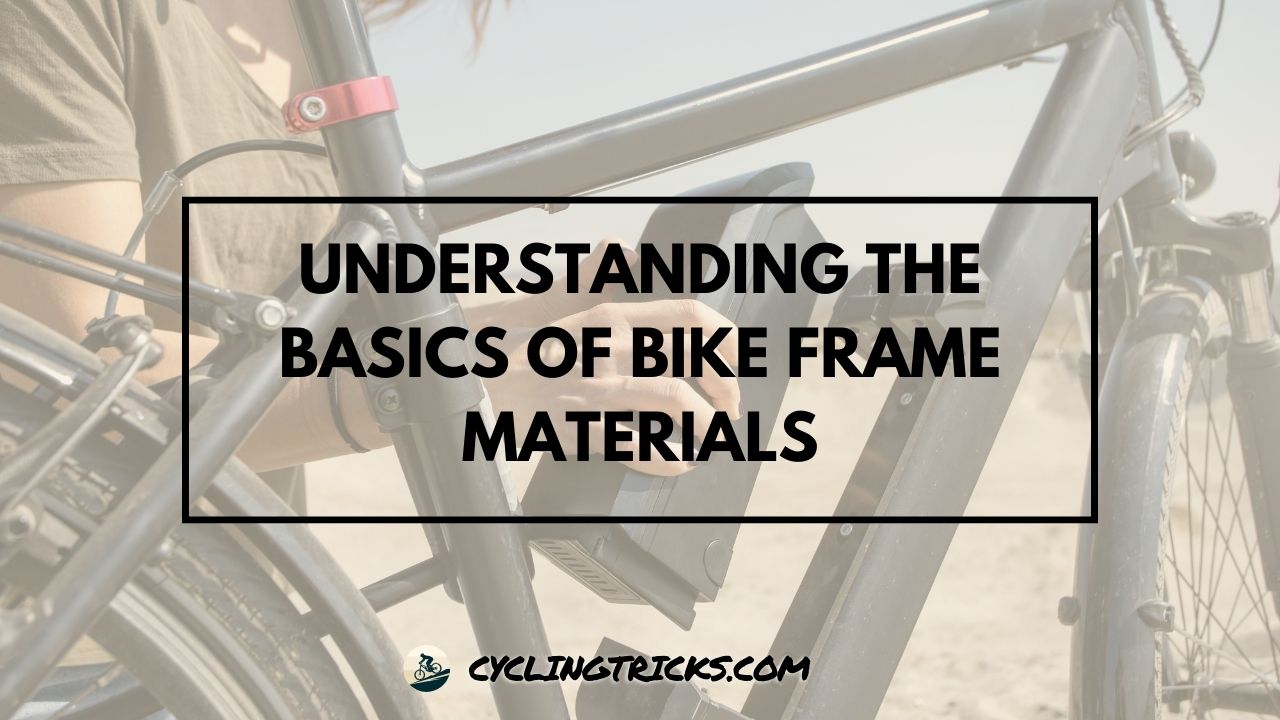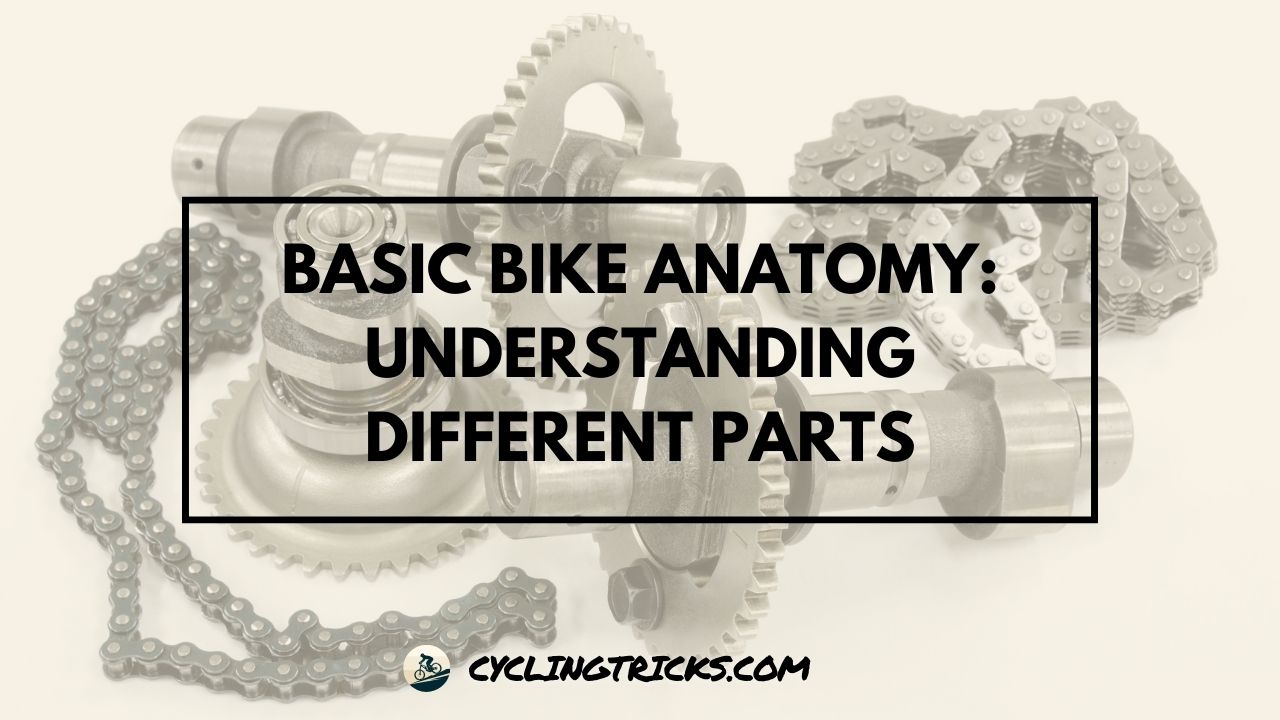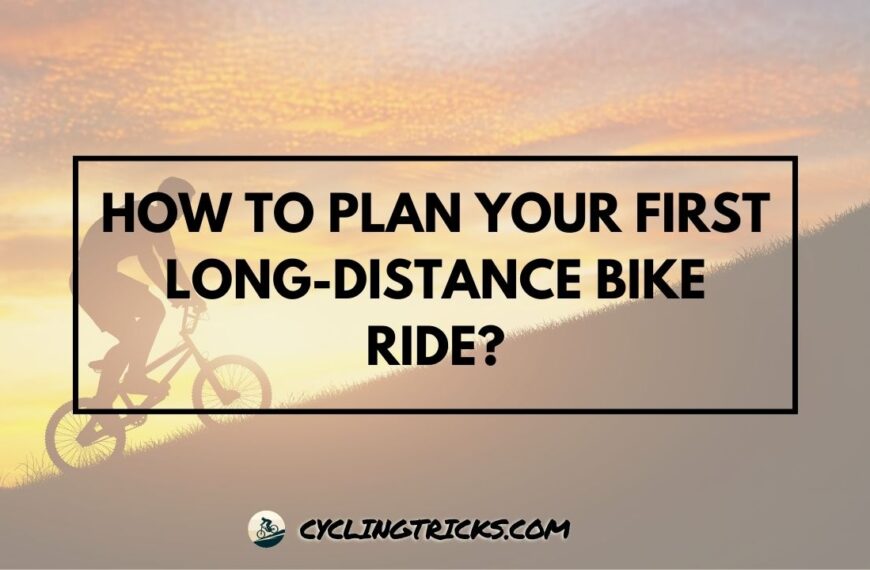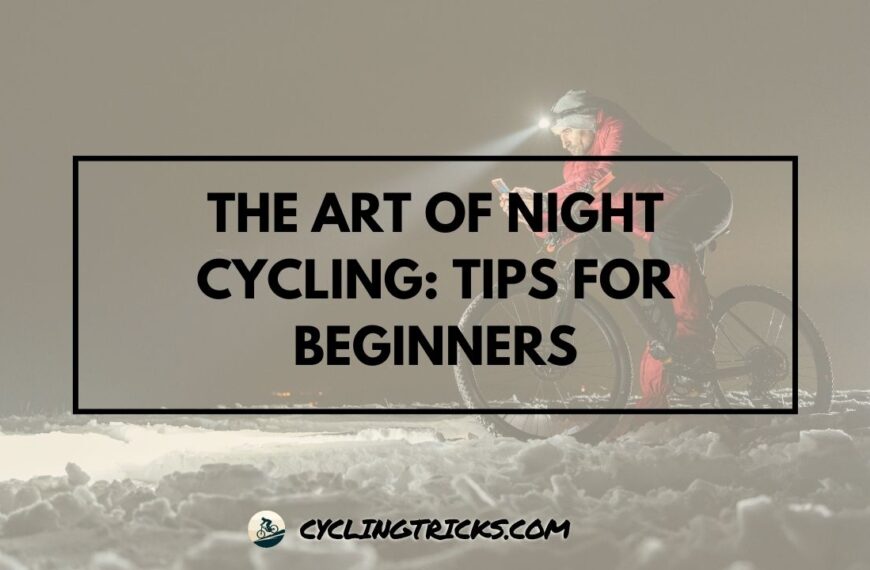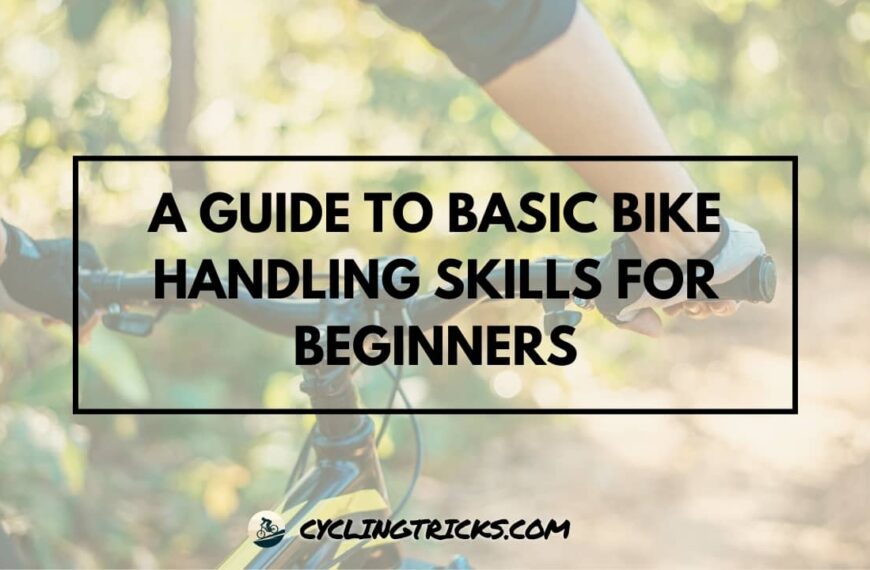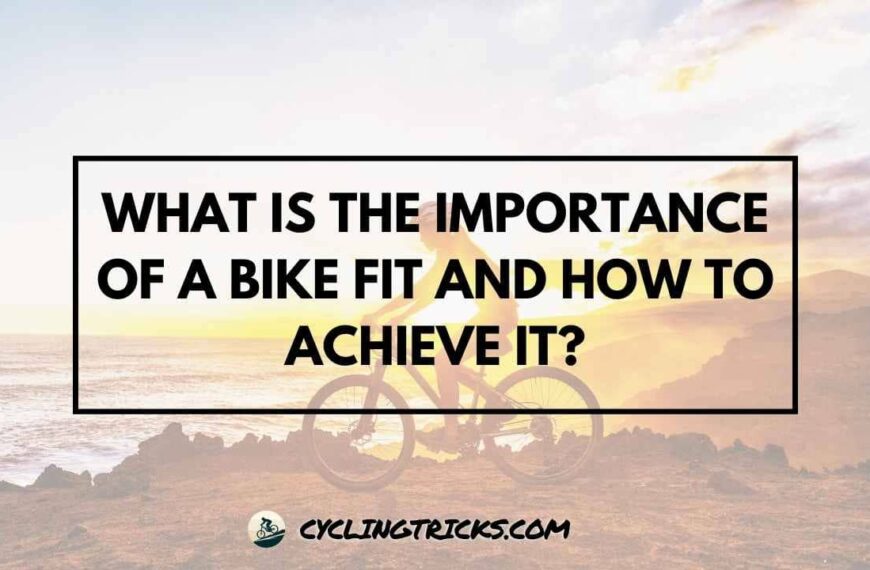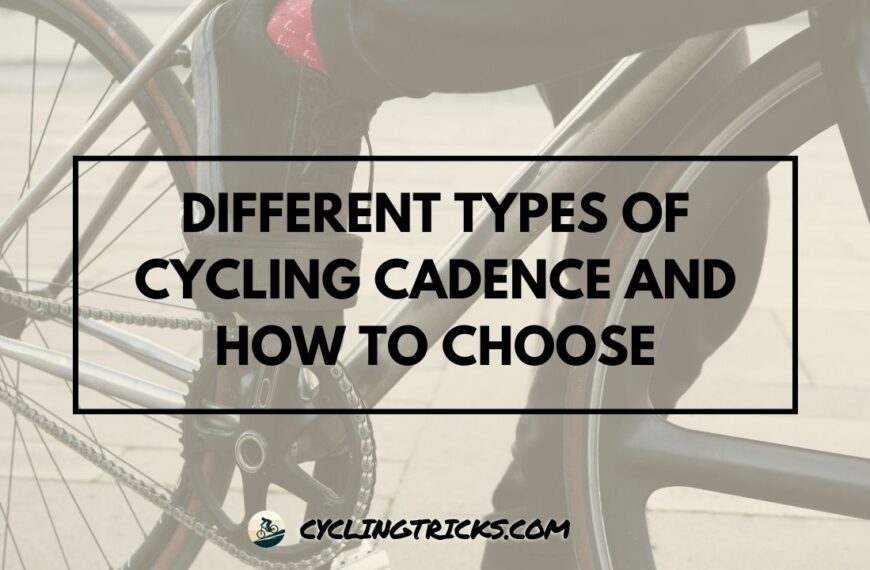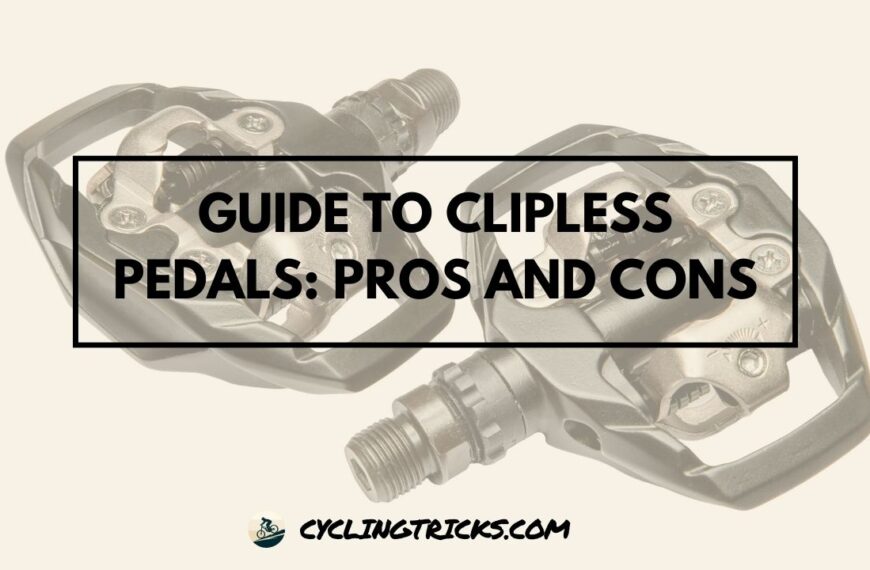Greetings fellow riders! One of the most important factors to consider before hitting the road or trail is the tire pressure on your bike.
Maintaining the correct tire pressure is essential for a smooth and efficient cycling experience, but it can often be confusing to know just how much air to pump into your tires.
Fear not, for in this article, I will share my expertise on how to choose the right tire pressure for your bike, regardless of whether you’re road biking or hitting the trails on a mountain bike.
Why Tire Pressure Matters for Cycling Performance
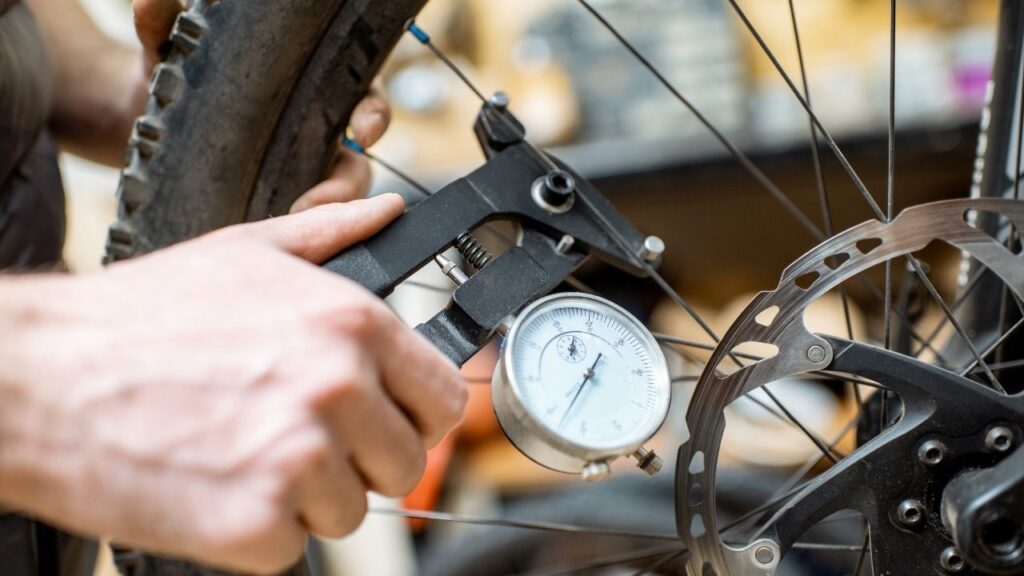
When it comes to cycling, tire pressure is a critical factor that can significantly impact your ride’s speed, comfort, and control. Maintaining the optimal tire pressure for your bike can help increase your efficiency and prevent unnecessary wear and tear on your tires.
A higher tire pressure will create less contact with the road surface, resulting in a faster ride; meanwhile, a lower tire pressure will increase the contact patch and help absorb bumps for a more comfortable ride. Finding the right balance between speed and comfort will be crucial in selecting the best tire pressure for your particular needs.
Additionally, the correct tire pressure can enhance your control when riding, particularly around corners. With the right tire pressure, your bike will have a more responsive and predictable movement, allowing you to glide through turns with ease and precision.
Overall, the role of tire pressure in cycling performance should not be overlooked. By determining the optimal tire pressure and maintaining it consistently, you can get the most out of your biking experience while staying safe and comfortable on the road or trail.
Factors Affecting Tire Pressure for Bikes
When it comes to determining tire pressure for your bike, there are several factors to consider. By understanding these factors, you can ensure that your bike has the ideal tire pressure for a smooth and efficient ride.
Rider Weight
The weight of the rider plays a significant role in determining the right tire pressure for a bike. A heavier rider will require a higher tire pressure than a lighter rider to support the weight and provide optimal performance.
Terrain Type
The type of terrain you will be riding on is another essential factor. For example, smooth pavement requires a higher tire pressure than rough off-road trails. A higher tire pressure can improve speed and control on smooth terrain, while a lower tire pressure can offer better stability on bumpy terrain.
Bike Type and Tire Width
The type of bike you have and the width of the tires can also impact the ideal tire pressure. Road bikes typically require higher tire pressure than mountain bikes, and wider tires typically require a lower tire pressure than narrow ones.
Considering these factors and adjusting your tire pressure accordingly can help ensure that you have the right tire pressure for your bike and are getting the most out of your ride.
Choosing the Right Tire Pressure for Road Bikes
If you’re an avid road cyclist, you know that tire pressure is critical to achieving optimal performance. Calculating the correct tire pressure for your road bike requires a few key pieces of information.
First, determine the recommended tire pressure range for your particular bike by checking the manufacturer’s specifications, which can usually be found on the tire sidewall. These specifications may also include recommended tire widths, which can affect the optimal tire pressure for your bike.
Next, factor in your weight as a rider. As a general rule, the more you weigh, the higher your tire pressure should be. Check a recommended bike tire pressure chart to determine the ideal range for your weight.
It’s also essential to consider the terrain you’ll be riding on. Flatter roads allow for slightly higher tire pressure, while rougher or uneven surfaces may require lower tire pressure for better traction and control.
Recommended Tire Pressure for Road Bikes
| Rider Weight | Tire Width | Tire Pressure Range (psi) |
|---|---|---|
| 100-110 lbs | 23 mm | 100-110 |
| 110-120 lbs | 23 mm | 105-115 |
| 120-130 lbs | 25 mm | 110-120 |
| 130-140 lbs | 25 mm | 115-125 |
| 140-160 lbs | 25 mm | 120-130 |
| 160-180 lbs | 25 mm | 125-135 |
| 180-200 lbs | 28 mm | 133-145 |
| 200-220 lbs | 28 mm | 140-160 |
Use this table as a starting point for selecting the correct tire pressure for your road bike. Make adjustments based on your specific weight, tire width, and riding conditions for optimal performance.
Remember, maintaining the proper tire pressure is essential for a safe and enjoyable road cycling experience. Check your tire pressure before each ride and adjust as needed to ensure the best possible performance from your bike.
Selecting Tire Pressure for Mountain Bikes
Mountain biking is an exciting sport that requires a specific tire pressure to handle the rough and varied terrain. The recommended tire pressure for mountain bikes is lower than that of road bikes, providing more contact surface with the ground and better traction.
However, the ideal tire pressure for your mountain bike may vary based on several factors, such as your weight, the type of trails you ride, and your riding style. To determine the recommended tire pressure, consider the following:
- The type of terrain: The rougher and more technical the terrain, the lower the tire pressure should be. For example, if you’re riding on rocky, rooty trails, lower tire pressure can improve traction and stability.
- The rider’s weight: Heavier riders will require more tire pressure to prevent pinch flats and bottoming out. Conversely, lighter riders can get away with lower tire pressure for more comfort and control.
- The riding style: Aggressive riders who like to take jumps and drops may need higher tire pressure to prevent bottoming out, while more cautious riders may prefer lower pressure for better traction and comfort.
Adjusting your tire pressure can also improve your mountain bike’s performance. If you find yourself slipping on climbs or losing control on descents, consider adjusting your tire pressure. Experiment with incremental changes to find the right balance between grip, stability, and speed.
Tip: It’s a good idea to carry a tire pressure gauge and pump with you on your mountain bike rides. Periodically checking and adjusting your tire pressure can make a big difference in your performance and overall experience.
Tire Pressure for Different Terrains
Riding on different terrains requires different tire pressures for optimal performance. The right tire pressure can improve control, stability, and reduce the risks of flat tires while riding on different surfaces like gravel, pavement, or off-road trails. It’s essential to understand the recommended tire pressure to enhance your riding experience.
Tire Pressure for Gravel Terrain
Riding on gravel roads requires a lower tire pressure than most other terrains. A recommended tire pressure for gravel terrain is around 60-70 psi (pounds per square inch). A lower tire pressure will increase your tire’s surface area, providing better traction, and a smoother riding experience. It also helps reduce the risk of slip-ups and maintains stability while riding on loose gravel.
Tire Pressure for Pavement Terrain
Riding on paved roads requires a higher tire pressure than other terrains. A recommended tire pressure for pavement terrain is around 80-100 psi. This higher pressure provides excellent rolling resistance, making it easier to achieve faster speeds while riding. It also improves braking performance, cornering, and reduces the chances of pinch flats.
Tire Pressure for Off-Road Terrain
Riding off-road or on bumpy trails requires a lower tire pressure than pavement terrain but higher than gravel terrain. A recommended tire pressure for off-road terrain is around 30-50 psi. This lower tire pressure provides better traction, stability, and control while riding on rough terrain. It also increases shock absorption, giving a smoother riding experience while reducing the risks of flat tires and improving grip.
Maintaining Correct Tire Pressure for Cycling
Congratulations, you have figured out the perfect tire pressure for your bicycle! But, maintaining the correct tire pressure is just as crucial as selecting it. Proper tire pressure can enhance your biking experience, while the incorrect amount of pressure can result in punctures and affect your performance. Here are some tips on how to maintain the correct tire pressure for cycling:
- Invest in a reliable tire pressure gauge. A gauge is essential for accurately measuring your tire pressure, which should be checked before every ride.
- Make sure you have the correct valve for your bike’s tube. There are two types, Presta and Schrader valves, and they require different pumps. A mismatched valve can cause inaccurate readings.
- Avoid overinflating your tires. Overinflation can lead to a bumpy and uncomfortable ride, as well as increase the risk of a puncture. Check the appropriate tire pressure for your bike and make sure you never exceed it.
- Similarly, avoid underinflating your tires, which can affect your stability and cause slower speeds and a less efficient ride. Check and maintain the optimal tire pressure for your tire size and riding needs.
- Adjust your tire pressure as necessary. Temperature changes, different terrains, and time can all affect your tire pressure. Make sure you’re aware of these factors and adjust your tire pressure accordingly.
- Don’t forget your spare tire. Maintaining the correct tire pressure for your spare tire is just as important. Check it regularly and have it ready in case of an emergency.
By following these tips, you can maintain the correct tire pressure for cycling and keep your bike in top condition for a safe and enjoyable ride.
Tips for Calculating Tire Pressure
Calculating the ideal tire pressure for your bike is crucial for a comfortable and safe ride. To accurately determine the right tire pressure, there are several helpful resources available, including:
Bike Tire Pressure Calculator
A bike tire pressure calculator is a useful tool for determining the optimum tire pressure for your bike. Simply input your bike’s tire size and weight, and the calculator will provide a recommended pressure range. Be sure to adjust the pressure according to specific ride conditions and personal preference.
We have created a great bike tire pressure calculator especially for you. Don’t forget to explore it by clicking here, and you can click here if you want to visit our all bike tools and calculators
Bike Tire Pressure Chart
A bike tire pressure chart can be an excellent reference guide for finding the recommended pressure based on your bike’s tire size and rider weight. Again, keep in mind that adjustments may be necessary for different terrain types and riding styles.
Cycling Tire Pressure Recommendation
Recommendations from experienced cyclists can also be a valuable resource for finding the ideal tire pressure for your bike. Joining cycling communities or seeking advice from local bike shops can provide insightful recommendations and tips.
By utilizing these tips and resources, you can accurately calculate the perfect tire pressure for your bike and enjoy a comfortable, safe, and efficient ride.
Adjusting Tire Pressure for Better Performance
Fine-tuning your bike’s tire pressure can make a difference in your cycling performance. Adjusting the tire pressure can help you glide through rough terrain and enable you to go faster on smoother tracks.
The ideal tire pressure for your mountain bike depends on personal preference, terrain, and riding style. If you prefer a smoother ride, less bumpy and faster, then lower tire pressure might work for you. On the contrary, a firmer tire might help you maintain control on technical tracks.
When determining the correct tire pressure for your bike, consider the following:
- The type of terrain you will ride on
- Your weight
- The type and width of your bike’s tires
As a general rule, it’s best to start with the recommended tire pressure range indicated on the tire’s sidewall and adjust according to your personal preferences and riding conditions.
Once you’ve established an initial tire pressure, ride your bike and see how it performs. You may try reducing or increasing the tire pressure by a few psi to see if it improves your riding experience. It’s important to make small adjustments and to test each new pressure on a similar terrain and riding style.
“Remember, the optimal tire pressure for your bike can change depending on the weather, trail conditions, and even your mood.”
Mountain Bike Tire Pressure Tips
Here are some tips to help you fine-tune your mountain bike’s tire pressure:
- For cross-country riding, aim for a tire pressure in the mid-range of the recommended psi range. Cross-country riders need a tire pressure low enough to provide some cushioning and grip, but not so low as to make the bike feel sluggish or unresponsive.
- For trail riding, reduce your tire pressure by a few psi from your cross-country setting. Lower pressure gives more grip on technical terrain and a smoother ride.
- If you’re riding in muddy conditions, consider decreasing tire pressure for added traction.
- When riding in dry conditions, aim for a slightly higher tire pressure for better rolling resistance and speed.
Following these tips will help you determine the correct tire pressure for your mountain bike and fine-tune it for optimal performance.
The Importance of a Tire Pressure Gauge
Accurately measuring and maintaining tire pressure is essential to optimize your road biking experience. A tire pressure gauge is a key tool to ensure you’re running on the correct tire pressure for your bike.
By frequently checking your tire pressure, you avoid unnoticeable underinflation or over-inflation, which can result in poor handling and lacking speed.
When choosing a tire pressure gauge, you want one that is durable and accurate. A digital tire gauge is your best option; it provides quick and reliable readings with precision, making it easy to adjust your bike to its optimal tire pressure.
With a regular and accurate tire pressure check, you’ll gain the confidence to ride your bike to its fullest potential, achieving optimal speed, comfort, and control.
Conclusion
In conclusion, selecting the proper tire pressure for your bike is crucial for an efficient and enjoyable ride. Understanding the factors that affect tire pressure and taking into account your specific bike and riding conditions can help ensure optimal performance.
Regularly checking and adjusting your tire pressure using a quality gauge will help maintain consistency and enhance your overall cycling experience. Remember to always prioritize safety by choosing the correct tire pressure for your bike and riding style. Happy cycling!
